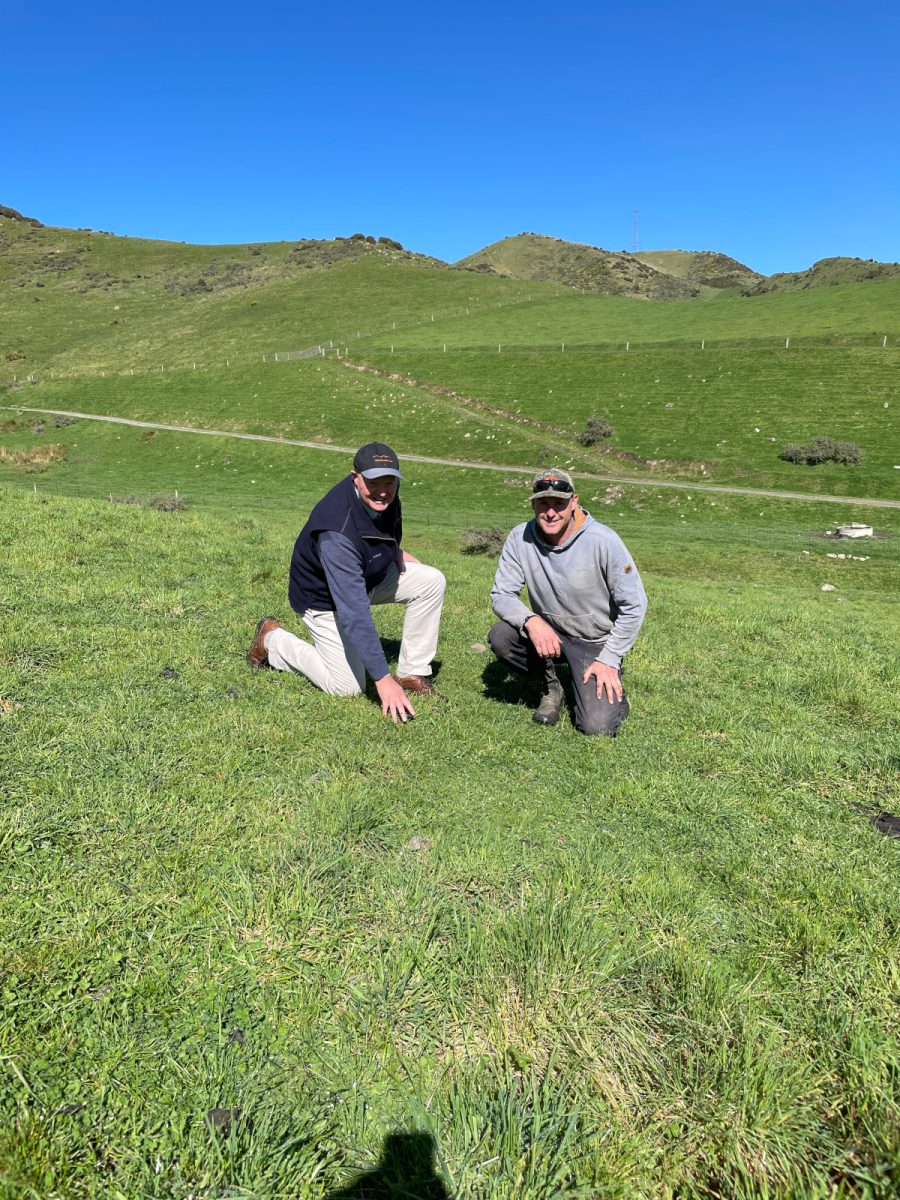Prof Moot was out on farms in North Canterbury this week. He was impressed with the contribution of sub clover to many pastures with the white flowers just starting to show. The combination of sub and cocksfoot was a revelation on Mt Benger, with a high legume component and few weeds 6 years after establishment. He explained how the clumpy nature of cocksfoot comes from the animals preferentially grazing the legume in between. However, the combination of species works because the cocksfoot keeps weeds out by grabbing all the summer moisture. This means it is quick to respond to any summer rain and provides maintenance feed when everything else is brown in mid-summer. The high spring sub clover content means animals urinate the nitrogen from the sub clover and the cocksfoot picks that up to become more palatable.

There is no perfect grass – but cocksfoot is definitely the winner for farmers wanting pasture persistence in dryland regions. It needs to be grazed hard in mid-summer and this opens up the ground for the sub clover to germinate in autumn. In contrast, ryegrass wilts under the warm summer heat and dies out – the MaxClover work at Lincoln showed that after 9 years there was no ryegrass left but the cocksfoot pastures were still over 65% sown species with great sub clover content.
During his visits there was also discussion of the role of lucerne in a potential drought year. Prof Moot was keen to promote sowing lucerne in the next three weeks – especially given recent rainfall. The advantage of a new lucerne stand is that it retains moisture in the soil that established stands will use earlier in the season. This means new lucerne provides high quality herbage in January when the older stands and grass-based pastures have stopped producing. The young lucerne stand will be most productive and grow for longest into the summer when sown on deeper free draining soils. The cost of establishing the new lucerne stand, compared with an annual summer crop, should be discounted across its lifetime. He remembers some early wisdom from Doug Avery when dealing with the 1990s droughts “in my dry years I spend all this money on brassica crops and the lack of summer rain and their shallow roots mean they let me down just when I need them most.” This was one of the main drivers for increasing the lucerne areas on Bonavaree.
